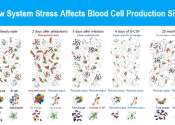Cell biology: The role of the alkaline phosphatase (Alpl) gene in preventing premature bone ageing
Mutations of the alkaline phosphatase (ALPL) gene in the liver, bone and kidney can cause hypophosphatasia (HPP) and early-onset bone dysplasia, asserting its key role in human bone development. Despite its importance, its ...









